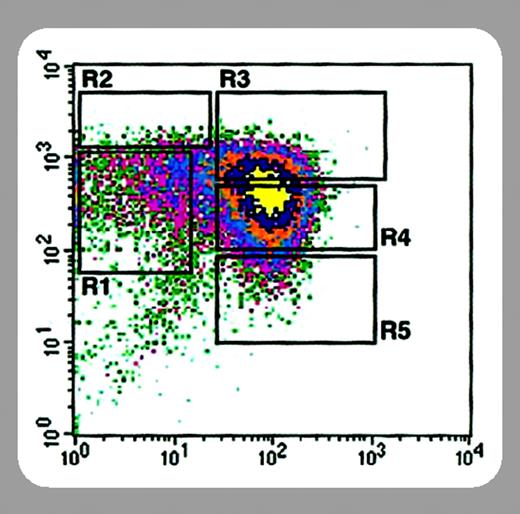The production of normal numbers of normal blood cells is a finely coordinated process requiring appropriate input from the environment (growth factors, nutrients such as iron or vitamin B12, etc) and a balance of cellular differentiation and proliferation at the appropriate times. Perhaps the most complete way to evaluate this process in vitro is with assays of hematopoietic colony formation by primary cells. The development of progressively more refined assays of hematopoiesis and the insights gained through these assays (for example, in evaluating requirements for hematopoietic growth factors) are among the stellar achievements of experimental hematology. However, it may be difficult to distinguish effects on proliferation from effects on differentiation using colony-formation assays alone, and it may also be difficult to accurately identify the stages of development at which these effects occur.
In an interesting paper, Zhang and colleagues (page 3938) employ a novel means of sorting out stage-specific effects in erythropoiesis by flow cytometry to clarify the role of Ras signaling in this process. Based on observations they had reported previously,1 the authors used expression of erythroid-specific (TER119) and non–erythroid-specific (CD71) transferrin receptor to sort murine fetal liver cells into populations that corresponded to erythroid colony-forming units (CFU-Es) and to the various stages of erythroid precursors, from proerythroblasts to reticulocytes. Correlation of the TER119/CD71 expression phenotype with erythroid differentiation allowed development of an in vitro culture system that more closely recapitulated the in vivo pattern of differentiation. Using this system, oncogenic H-ras but not dominant-negative H-ras was found to partially block CFU-E colony formation.
The authors then evaluated the TER119/CD71 expression profile observed following transfection with H-ras. Infected cells accumulated at the CFU-E and proerythroblast stages, suggesting H-ras exerts its effects by blocking differentiation and enhancing abnormal proliferation at that level. No effects on apoptosis were seen.
Apart from the new information they provide, these elegant studies remind us that better definitions of the phenotype of hematopoietic progenitors and further improvements in culture techniques retain the capacity to enhance the molecular investigation of hematopoietic regulation.


